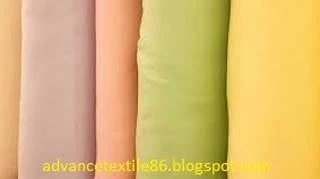Linen fabric
Linen fabric is a textile fabric that is obtained
from the flax plant. It is very strong, absorbent, and dries much faster than
cotton. For these features, linen fabric
is used to create comfortable and expensive clothing to wear in hot weather. It
also has other special features, notably its tendency to shrink, and many more
products, including home furniture items, are often made from linen.
History of linen fabric
Linen fabric/textiles are one of the oldest textiles
in the world, dating back thousands of years. The use of linen cloth woven from
dyed flax fibers found in a cave in southeastern Europe dates back more than
30,000 years. Linen was used in ancient civilizations, including Mesopotamia
and ancient Egypt, and the Bible contains references to linen. In the
eighteenth century and beyond, the linen industry was important in the
economies of American colonies as well as several European countries.
Properties of linen fabric
1.
Linen fabric is a bast fiber fabric
like cotton.
2.
Cross-section of the linen fiber is irregular polygonal shapes that contribute
to the coarse texture of the fabric.
3.
The linen fabric feels cool to the
touch, a phenomenon that indicates its superior conductivity.
4.
This makes the smooth, finished fabric lint-free and softens as it washes.
5.
It has poor elasticity and shrinks easily.
6.
Mildew, perspiration, and bleach can damage the linen fabric.
7.
It can be dry-cleaned, machine-washed, or steamed.
8.
It has no lint or pilling tendency.
9.
It wrinkles very easily, and thus some more formal garments require ironing
often.
10.
It can withstand high temperatures and only medium initial shrinkage.
11.
It is more biodegradable than cotton.
12.
It has a long staple length relative to cotton and other natural fibers.
Production method
The
quality of finished linen products depends on the growing situation and
harvesting techniques. To produce the longest possible fibers that are
harvested by the plant or stalk. After harvesting, the plants are dried, and
the seeds are removed by a mechanical process called rippling. The fibers are
retrieved from the stalks retting. This is a process that uses bacteria to
decompose pectin from the fiber. Natural retting procedures are performed in
tanks and pools, or directly in the field.
After
retting, the stalks are ready for scutching which takes place between August and
December. Scutching removes the wooden part of the stalk by crushing it between
two metal rollers so that the stalk parts can be separated. The fibers are
removed and parts like linseed, shave, and toy are kept separate from other
parts. After the fibers are separated and processed, they are usually cut into
yarns and woven or woven fabric.
Uses of linen fabric
1.
Linen fabric can be used in many
products like aprons, bags, towels, napkins, bed linens, tablecloths, runners,
chair covers, and men's and women's wear.
2.
It has been used for table coverings, bed coverings, and clothing for
centuries.
3.
It is used in lightweight undergarments like shirts, chemises, waist-shirts,
lingerie, and detachable shirt collars and cuffs.
4.
It is used in a wide range of bed and bath fabrics like tablecloths,
bath towels, dish towels, bedsheets; home and commercial furnishing items such
as wallpaper/wall coverings, upholstery, window treatments; apparel items like
suits, dresses, skirts, shirts; and industrial products like luggage, canvases,
sewing thread.
5.
Linen fabric is used in oil
painting. It prefers cotton over its strength, durability, and archival
integrity.
6.
It is used extensively by artisan bakers known as a couche, and cloth is used
to hold the dough into shape while in the final rise, just before baking.
7.
It is used in making currency paper. The U.S. currency paper is produced from
25% linen and 75% cotton.










0 Comments